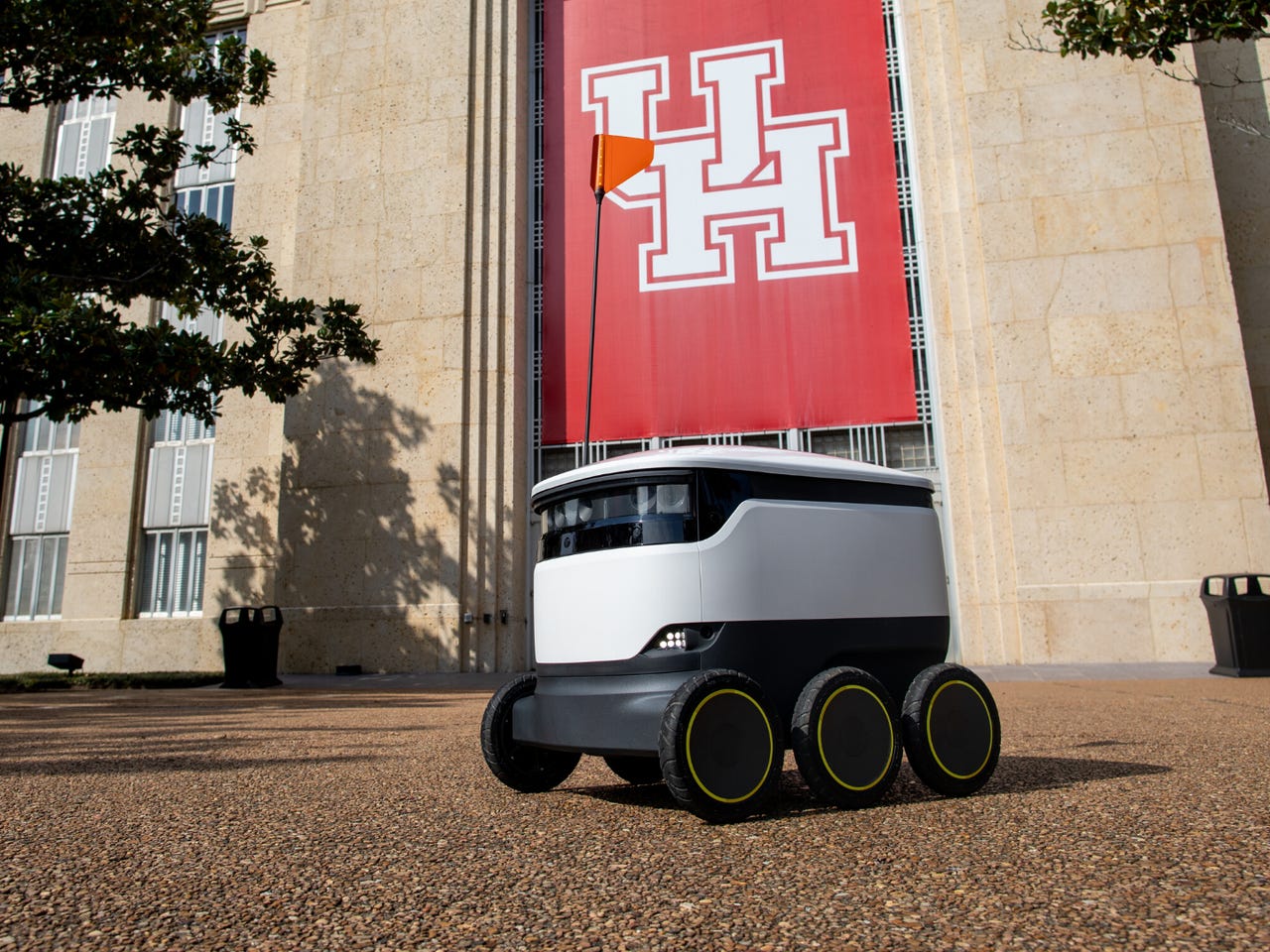Autonomous robots serving dorm delivery munchies on campus


The robots are coming, the robots are coming. And that's good news if you're a college kid with the munchies.
The University of Houston has become the latest college campus to offer food delivery via autonomous ground robots. That's thanks to a fleet of 30 robots created by Starship Technologies. The robots are designed to deliver goods locally in cities and other navigable environments. So far, Starship's delivery robots have traveled tens of thousands of miles in over 100 cities around the world, although most of those deliveries were monitored by humans who can take over control at any time.
The University of Houston, home to over 53,000 students, faculty, and staff, is the first institution of higher education in the state of Texas to offer robotic food deliveries on campus. Starship previously deployed its robots on campus at George Mason University.
It's a savvy way to bring the technology to market. Municipalities are slow to catch up to technological development, and in the wake of aggressive tactics from companies like Bird and Uber, the leadership of which has made an art of asking for forgiveness, not permission, cities are understandably reticent to open the doors to paradigm-shifting technology like delivery robots.
But college campuses have fewer layers of bureaucracy. Colleges also benefit from the perception of being technologically advanced and cutting edge.
"This revolutionary delivery method will make it more convenient for the campus community to take advantage of our diverse dining program from anywhere on campus while expanding the hours of operation," said Emily Messa, UH associate vice president for administration. "By opening our campus to this innovative service, which is paid for by the customers, the university didn't have to spend any money purchasing the technology, yet we're enhancing our food delivery capabilities."
To access the service, users open the Starship Deliveries app (iOS and Android), choose the items they would like from one of eleven UH Dining locations (options include Drexler's, Starbucks, Einstein Brothers Bagels, Panda Express, and Cougar Village Market), and drop a pin by selecting the location on the service map where they want their food to be delivered.
The app allows users to watch the robot's journey to them through an interactive map. Once the robot arrives, the user receives an alert, and they can meet the robot and unlock it through the app. Robots can carry up to 20 lbs. or the equivalent of about three shopping bags of groceries.
The service is subsidized via small delivery fee of about two bucks. Payment can be made via credit, debit, or the campuses "Cougar Cash."
"This increases our capacity to reach more customers, and I expect the robots will quickly become part of campus life," said David Riddle, Chartwells resident district manager. UH Dining is managed by Chartwells Higher Education. "Robot delivery will also grow opportunities for UH Dining employees by increasing service hours and growing sales. It has also created additional jobs for students dedicated specifically to servicing the autonomous robots. It's an important advancement for foodservice at UH."